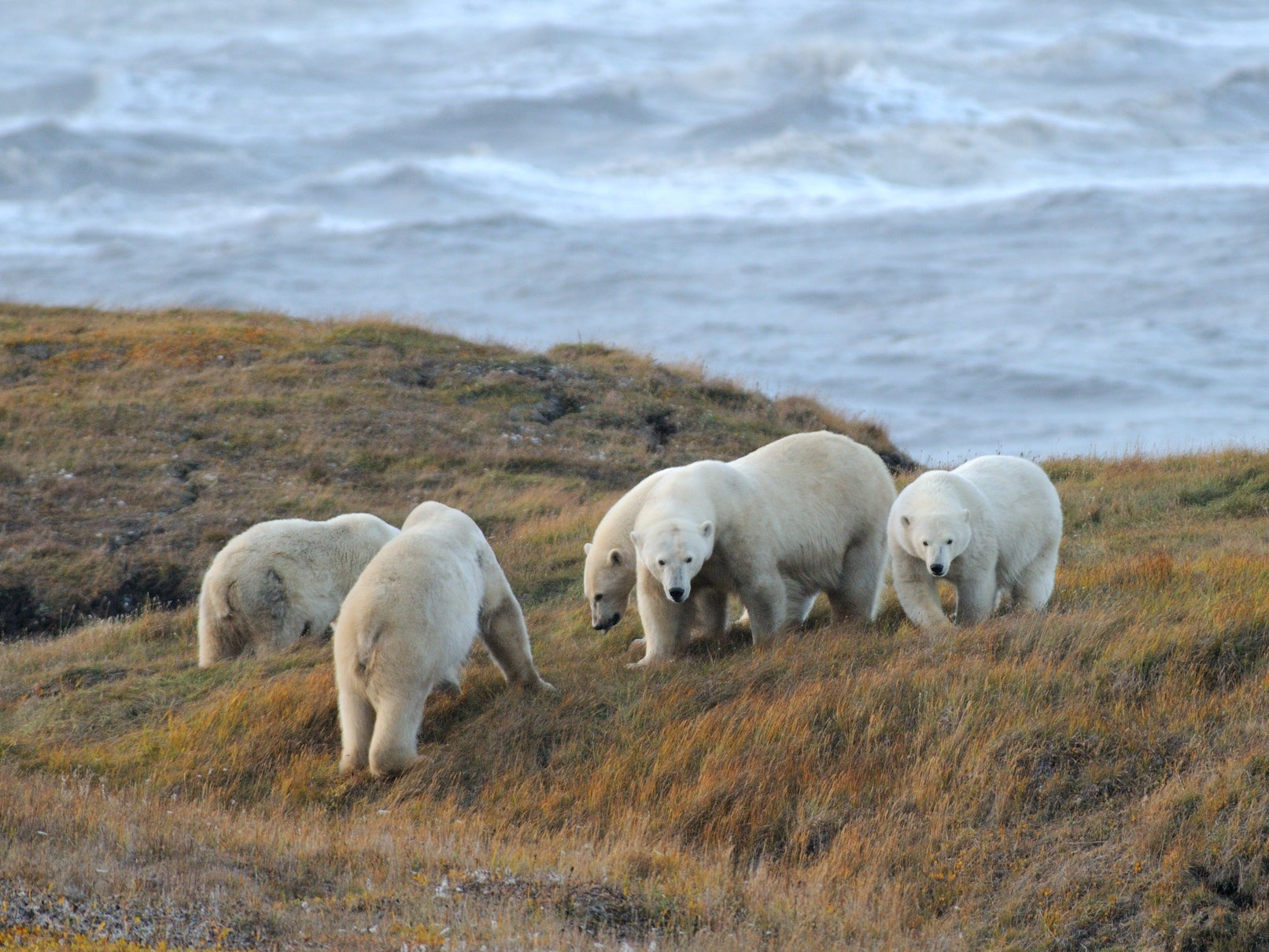Polar bear populations could disappear from Arctic by 2100 as ice caps melt, scientists warn
Even with considerable emissions cuts some populations of bears could be lost this century, explain Harry Cockburn


Unless radical action to tackle the climate crisis begins in earnest, most of the Arctic’s polar bear population could be wiped out by the year 2100, scientists have warned.
The main threat to the bears is the rapid melting of sea ice, upon which they depend for reaching the seals that make up an essential part of their diet.
Arctic sea ice grows in extent in winter and shrinks in summer, but overall it is declining at a rate of 12.85 percent per decade, with the 10 lowest ice extents all recorded since 2007.
Due to declining summer sea ice, many bears are forced onto land, or they follow the remaining ice as it drifts over deep, unproductive waters.
In either scenario the bears end up largely food deprived. These prolonged fasting periods have been linked to reduced body condition, reproduction, and survival in some polar bear populations.
The new study projects when polar bear populations in the Arctic will cross critical thresholds of food deprivation which will then lead to rapid declines in their reproduction and survival.
The research team calculated risk timelines for different polar bear populations, exploring two alternative futures with different levels of greenhouse gas emissions and atmospheric concentrations of CO2.
They found if business-as-usual greenhouse gas emissions continue, it’s likely that all but a few polar bear populations will collapse by 2100.
But they found even with considerable reductions in emissions it will not be enough to save polar bears much beyond the end of this century.
“Previously, we knew that polar bears would ultimately disappear unless we halt greenhouse gas rise.
But knowing when they will begin to disappear in different areas is critical for informing management and policy, and inspiring action,” said Dr Steven Amstrup of Polar Bears International, who conceived the project and is a co-author of the study.
He added: “We found that moderate emissions reductions may prolong global persistence, but are not likely to prevent the extirpation of several populations, emphasising the urgency of more ambitious emissions cuts.”
The scientists said data linking sea ice decline to reproduction and survival was lacking for most of the world’s 19 polar bear populations and cannot be measured in advance for future low ice extremes.
“In this study, we flipped the focus so that future reproduction and survival - the vital demographic parameters of interest - become model outputs rather than required but unobtainable inputs,” said Dr Amstrup.
“We now have an analytical basis for how populations will begin to collapse and how much different age and sex groups can endure.”
First author of the study, Dr Péter Molnár, of the University of Toronto, said: “By estimating how thin and how fat polar bears can be, and modeling their energy use, we were able to calculate the threshold number of days that polar bears can fast before cub and/or adult survival rates begin to decline.”
Dr Amstrup said: “Polar bears have long been considered messengers of the climate change symptoms that will impact all life, including humans. We know that floods, droughts, and wildfires will become more frequent and severe as the world continues to warm, but timelines for such events are hard to predict.
“The coronavirus pandemic is a reminder of how vital it is for our governments to take the actions needed, even when the timeline of the threat feels uncertain. Showing how imminent the threat is for different polar bear populations is another reminder that we must act now to head off the worst of future problems faced by us all.”
The study is published in Nature Climate Change.
Join our commenting forum
Join thought-provoking conversations, follow other Independent readers and see their replies
Comments